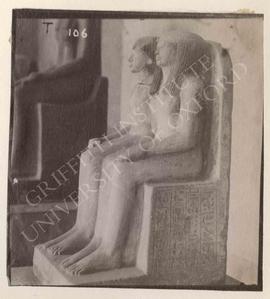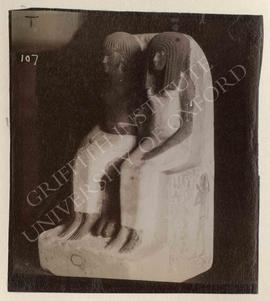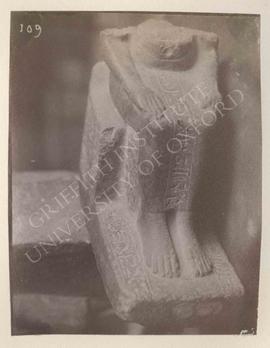Preparing one side of the cow-headed couch for transport
- TAA ii.6.79
- Pièce
- 1923
Fait partie de Tutankhamun Archive
- Postcard
- Photograph, photographer not known.
- The photograph was taken on 24th January 1923, the day Carter recorded this couch being moved; the postcard's production date is unknown, but it was almost certainly sometime in the 1920s.
- Howard Carter (left), assisted by Walter Hauser (right), manoeuvring the right side of the cow-headed couch (Carter 73) into a packing case in preparation for its transfer to the nearby 'Laboratory' set up in the tomb of Sethos II (KV15).
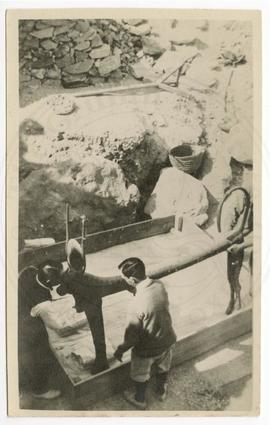
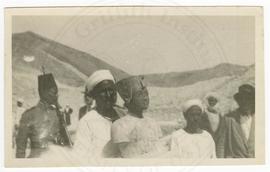

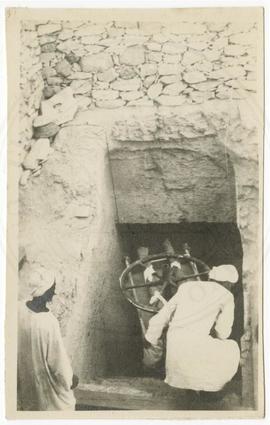
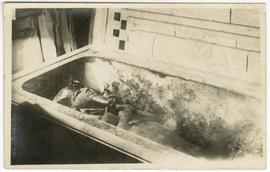
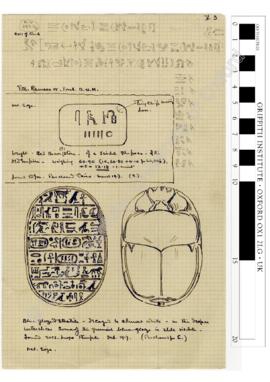

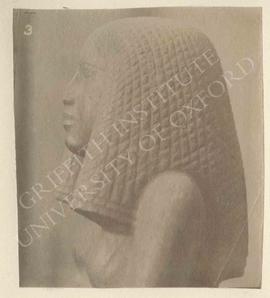


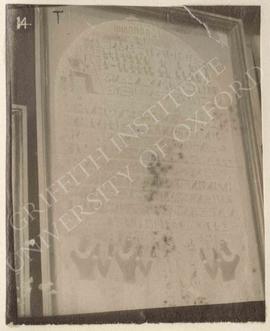
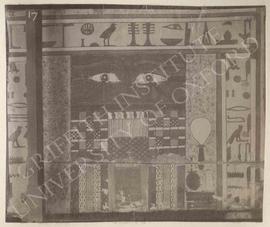
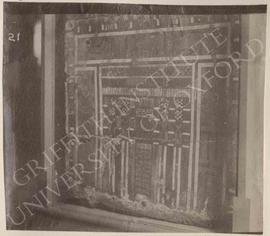

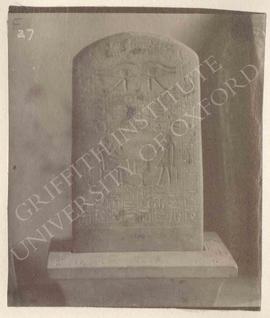
![[Top left] Fragment of a stela of Bekmin and [his wife?] Sitsobek before [Hathor], Dyn. XVIII, fr...](/uploads/r/null/0/5/4/0541bf88fe427275073693cafc828cc89795bca90ce11c4a9b6bf51d91114254/Petrie_Italian_album_029_res600ppi_142.jpg)
![[Upper left] Stela of Tetiankh, Dyn. XVIII, from Thebes, now in Florence, Museo Archeologico, 637...](/uploads/r/null/f/8/4/f848e912a8bd17f428ac1ae3abd6aee5d8aaf1bce1ec591d3f9b0aff800dbaaf/Petrie_Italian_album_030_res600ppi_142.jpg)
![[Left] Stela of Nebimosi, dedicated by his brother Minnakt, early Dyn. XVIII, provenance not know...](/uploads/r/null/f/1/5/f156514279f4bbb71b9f8f147612e17733a8dfa41dd90eb1a72f1d2b3fa5c0e5/Petrie_Italian_album_032_res600ppi_142.jpg)
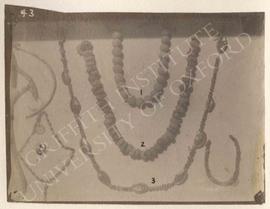
![[Left] Stela of Mery, late Old Kingdom, from the Akhmim district, now in Florence, Museo Archeolo...](/uploads/r/null/c/f/4/cf4e1ccede4c8e3ba94cb3f2990313d2128f68ac7f82128aeb84f3f7d617204f/Petrie_Italian_album_049_res600ppi_142.jpg)
![[Left] Stela of Iyu and his family, late Dyn. XII or Dyn. XIII, provenance not known, now in Flor...](/uploads/r/null/9/4/c/94c6d4b4af7ff812b3e669cc0167d45514b8b35f5f5dc2bcf0a8c803f5d93064/Petrie_Italian_album_053_res600ppi_142.jpg)
![[Left] False door of Kausut, Old Kingdom, provenance not known, now in Florence, Museo Archeologi...](/uploads/r/null/8/f/1/8f17182ddc9db7e4e2cdf85a7da49452b491d0acd7705f0acf1639eb8ad10f0b/Petrie_Italian_album_060_res600ppi_142.jpg)
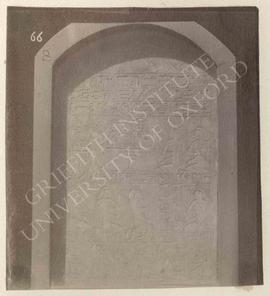
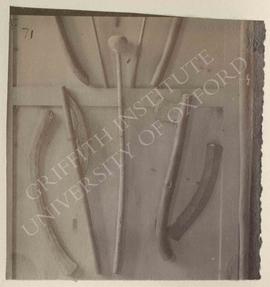
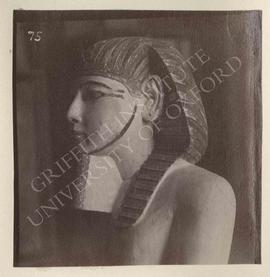
![[Upper] Three metal vases, not identified, now in Florence, Museo Archeologico; [lower] wooden ca...](/uploads/r/null/5/0/a/50ae330da92d8a7564ca5d7ed74b91e8460676a7649c815b302a3ad6f4a28078/Petrie_Italian_album_081_res600ppi_142.jpg)

